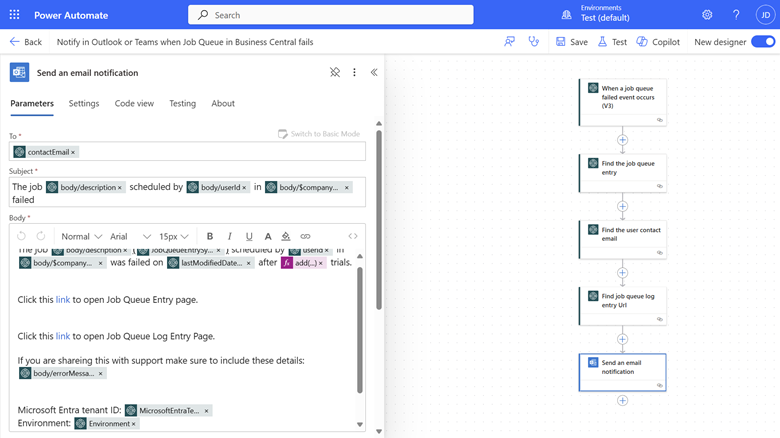Note
Access to this page requires authorization. You can try signing in or changing directories.
Access to this page requires authorization. You can try changing directories.
| Enabled for | Public preview | General availability |
|---|---|---|
| Users by admins, makers, or analysts |  Oct 1, 2024
Oct 1, 2024 |
 Nov 1, 2024
Nov 1, 2024 |
Business value
Sometimes tasks, reports, or batch processes take a long time to complete. To keep people productive, companies often use Business Central's job queue to run processes in the background. If something goes wrong and an important background process stops, or if the process isn't scheduled, receiving a notification helps you quickly resolve the issue.
Feature details
To get notified about issues with job queue processing, run the Set up Job Queue Notifications assisted setup guide from the Assisted Setup page. The guide helps you set up your notifications. Follow the steps in the Get notified about issues with job queue background processing release plan.
Choose Next on the second step to specify how to send notifications. In addition to In-product notifications, choose Control notifications with business events (preview) to turn on the toggle and manage your notifications through external business events.

On the fourth step, select Next to finish the guide for setting up a Power Automate flow that sends notifications when the job queue fails and the external business event is sent.

Select Create an automated flow from Job Queue Notification template to open the Job Queue Entries page. On the Job Queue Entries page, select Automate, Power Automate, and then Create automated flow to open the Create a flow page. The Create a flow page includes a Notify on Outlook or Teams when Job Queue in Business Central fails template.
On the Create a flow page, set up connections to Business Central, Outlook, and Teams, or any combination of these apps. Select Next to set parameters for the flow. Select Edit in advanced mode to edit the flow that the template creates to fit your needs.

Select Finish to apply the notification settings.
Geographic areas
Visit the Explore Feature Geography report for Microsoft Azure areas where this feature is planned or available.
Language availability
Visit the Explore Feature Language report for information on this feature's availability.